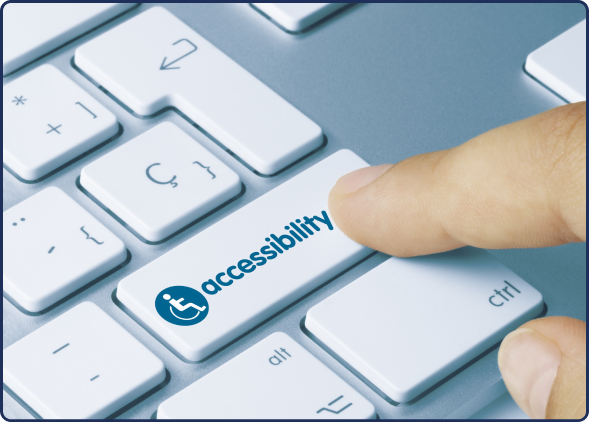Website Accesibility
Discover How a Simple Widget Can Make Your Website Accessible to Millions and Shield You from Lawsuits
Site Accessibility Audit

We conduct an initial audit of your site to identify accessibility issues, missing tags, and alt text. This helps us understand your accessibility needs and how our widget can assist. You’ll receive a comprehensive report of your homepage, highlighting any accessibility issues and their potential impact.
Install the Widget

LegalEye has partnered with Userway to offer a website widget that enhances accessibility for various impairments and actively resolves issues and missing information on your site. Installing this widget is straightforward—it requires just one line of code for your entire website. We can guide you through the process or coordinate with your web developer for seamless integration.
The widget goes to work

Widget Activation Powered by AI. the widget intelligently identifies and fixes accessibility issues on each page of your website. It automatically adds alt-text to links, images, and videos, corrects headings, labels forms, and more—all without requiring your intervention. Your website is now accessible to millions more with disabilities!
Pick Your Trademark Package
One Widget Fixes All
With one simple line of code on your website, our accessibility widget allows those with any impairments to alter your website to their needs.
AI-Powered
The widget not only allows users to adjust the site, it patches issues on your site in real-time so your users never experience an issue.
Become ADA Compliant
As a business website, you are expected to be accessible to all, much like a storefront. Increase your reach by allowing millions to comfortably use your site.
Consultation with an Attorney on Trademarking
Have questions about trademarking?
Honest answers and guidance—no sales pitch, just straightforward advice.
From hundreds of lawsuits to thousands of demand letters across multiple continents, accessibility has become a pressing legal concern. Large corporations face lawsuits for failing to provide accessible web and mobile content to consumers. Small businesses receive demand letters for restitution due to non-compliance with basic accessibility standards. Licensed and medical professionals confront complaints for inaccessible patient services.
Embracing web accessibility isn’t just a moral imperative—it’s a savvy business decision.
How It Works
Watch this short video to see some of the ways the widget works in real time.
Frequently Asked Questions
Right now, the USPTO timeline is anywhere from 9 to 12 months to register a trademark. Those who apply are facing an 8 month wait for the USPTO to assign someone to examine their mark. Once an examiner is assigned, they will issue a response within a few days. Once the mark is approved by the examiner, the mark will go through 6 weeks of publishing for opposition. This is the time period where those, who believe you shouldn’t be granted the trademark, can file a notice of opposition to argue their case.
Technically, trademarks don’t expire, but they can lose their enforceable rights. Between the 5th and 6th anniversary, you must submit a declaration of use, also known as a section 8 declaration. This is a sworn statement that the trademark is still in use by the owner. Then on the 10th anniversary, the owner must file a section 8 and 9 declaration which now includes a list of goods and services in connection with the trademark and a specimen of the trademark in use. This declaration must then be filed every 10 years.
Yes, you can trademark a name as long as the name is used in conjunction with goods or services. When trademarking a person’s name, you must either disclaim that the name isn’t of someone currently living, or you must submit an signed affidavit stating that use of the name is acceptable.
